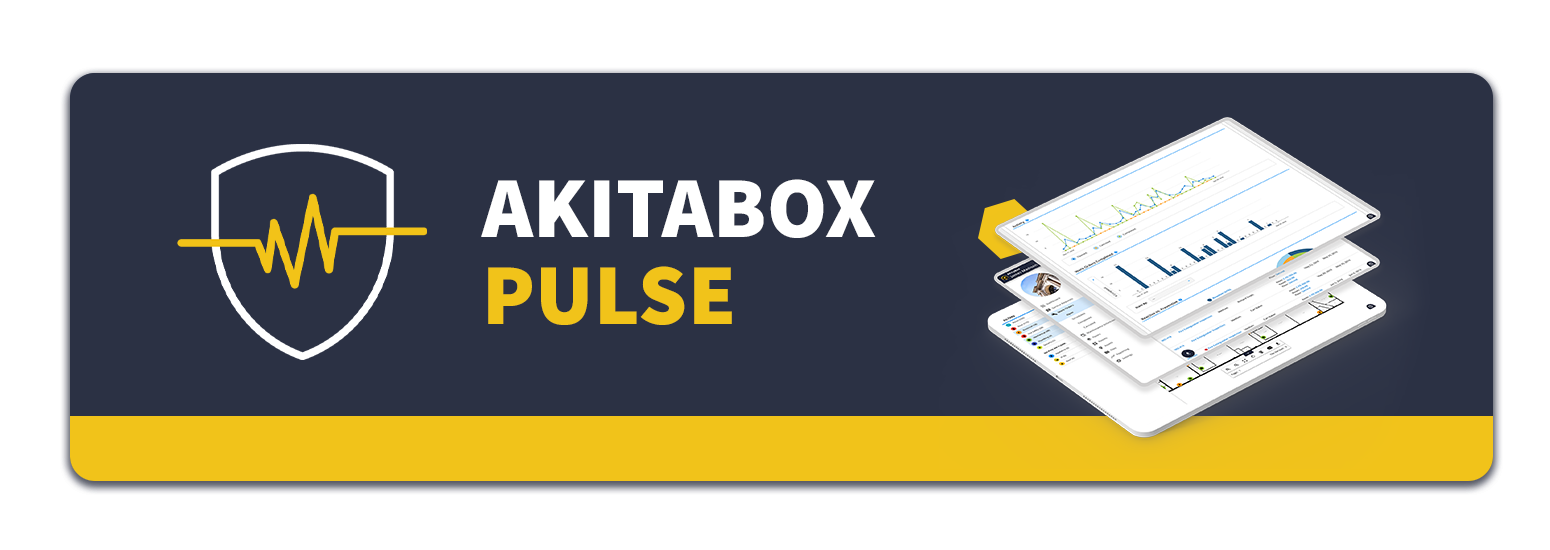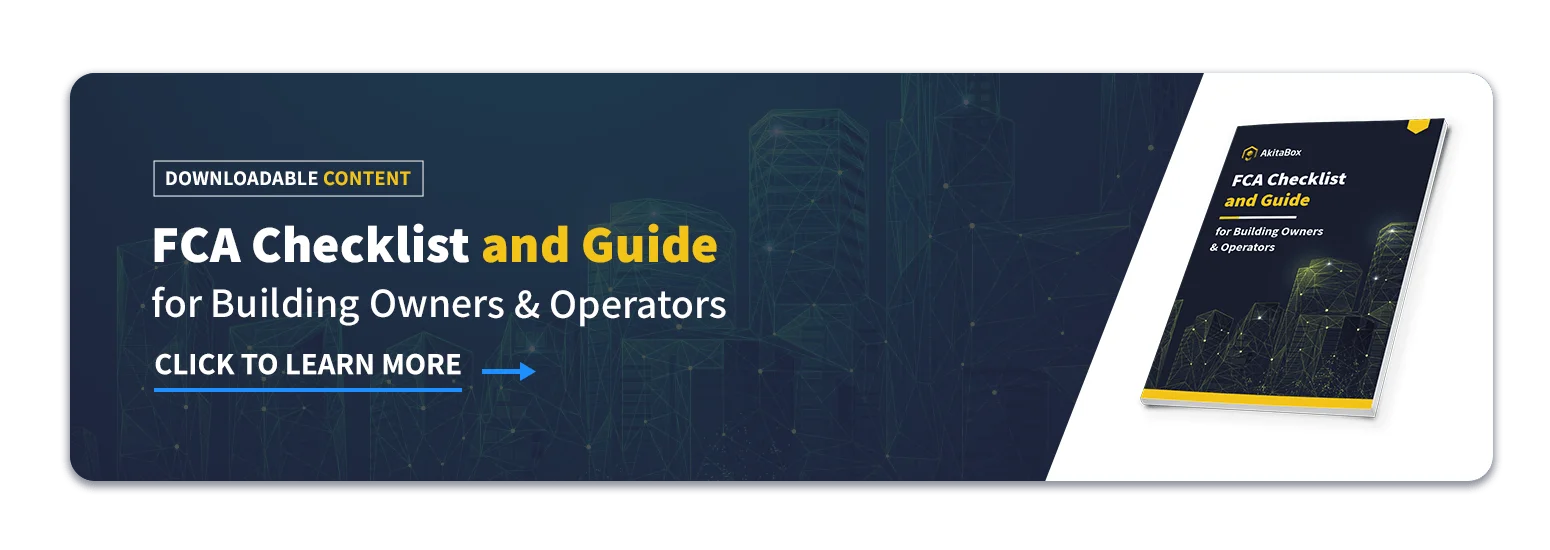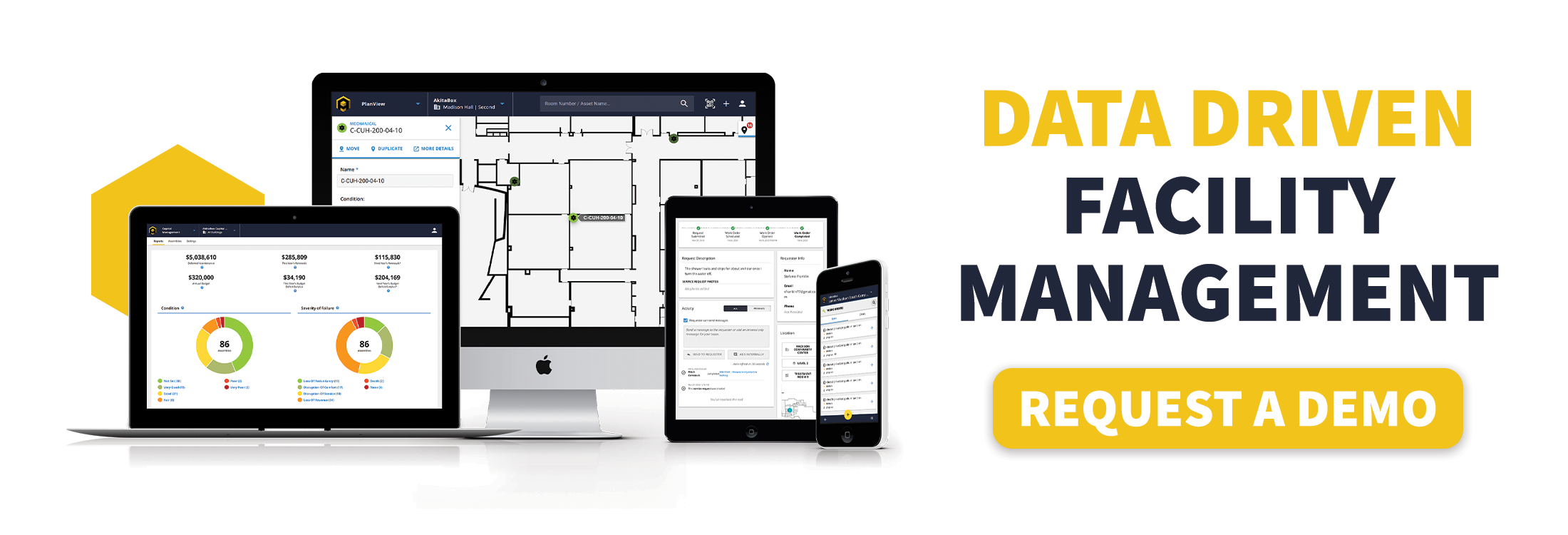How to Leverage the Lifecycle of Facilities Data for Capital Planning
Your facility data is a living thing with its very own lifecycle. In the simplest terms, the facilities data lifecycle has 3 main stages.
1. Design/Construction
As the building comes to life, the construction firm records information on every aspect of the facility – including building materials, change orders, blueprints, as-built drawings, asset specs, warranties, and O&M manuals.
2. Operations
After construction is complete, the building data is handed over to the operations team. They rely on this data to properly manage the building. In addition, they add more data into the lifecycle via work orders, inspections, and facility condition assessments. Every individual asset lifecycle creates information that rolls up into the overall data lifecycle.
3. Next Construction Project
There’s a treasure trove of insight to be found in the data from the building’s operational phase. The stakeholders involved in the next building project take the lessons learned from the old building and apply them to the design and construction of the next remodel, expansion, or new building.
The valuable information you collect and maintain in each stage feeds directly into the next stage. The more smoothly this data flows through the lifecycle, the more easily and effectively you can manage your facilities.
You may have noticed that in the operations stage of the lifecycle, your data has a symbiotic relationship with your facilities management activities. Things like work orders, facility condition assessments, and inspection results all feed into your data’s lifecycle to keep it fresh and healthy. In turn, this data supports your maintenance efforts, FCAs, and capital planning. And back and forth the relationship goes.

The more you feed and maintain your data, the stronger it becomes – which also strengthens your capital planning, preventive maintenance, and other FM objectives.
Capital management requires information from across the data lifecycle – not just FCA results. So how do you properly maintain that lifecycle so you have what you need for capital planning?
The Care and Feeding of the Facility Data Lifecycle for Better Capital Planning
Healthy facilities data equals more effective capital planning. Here are 3 ways to ensure your data is in top notch condition.
Bring All Your Data Into One Place
While your building is in the operations stage, your facilities data lifecycle pulls information from multiple sources: facility condition assessments, reactive work orders, preventive maintenance tasks, inspection results, and the list goes on.

All of that data should live in one system – and the technology to do it already exists today. Imagine all of your capital planning, FCAs, maintenance, and inspections together in one cohesive platform. And all of it fully accessible to everyone on the FM team. AkitaBox Pulse is an example of this type of system.
Now it’s easy to add new data and reference or update existing data. As a result, your data stays accurate and current. No more data silos. No more using multiple separate tools for different FM functions that require you to move data back and forth. And no more valuable data falling through the cracks.
Manage Assets, Not Buildings
Managing a facility really comes down to managing the individual assets that make up the facility. Get asset management right and you’re well on the way to great facility management.
However, many buildings aren’t managed down to the asset level. One reason for this is because many facilities management tools weren’t built for asset-level management.
This overly broad approach to data management means plenty of valuable information isn’t captured. For example, your tech can note that they fixed the hot-cold issue on the third floor, but there’s no way to know what assets were actually touched during the repair. You don’t know if it was the air handler unit or a vent that was the root cause of the issue.
Another example: There’s no easy way to track the upstream and downstream relationships between assets. If a pipe bursts, techs spend vital time trying to determine where the shutoff valve is.

Without more granular data, it’s extremely tough to effectively manage your facility’s assets. And it’s even harder to determine which assets need replacing and what their remaining useful lives are to inform your capital planning.
The good news is that you can now find FM software that does allow asset-level management. AkitaBox is one of them. It enables you to associate manufacturer info, warranties, work orders, condition notes, and anything else you want to track to an individual asset or asset group.
Conduct Living Facility Condition Assessments
FCAs have always been a critical component of capital planning. However, so much of the data captured in traditional, static FCAs goes to waste. But it doesn’t have to be that way.
With a living FCA, your FCA data can be incorporated into the rest of your facilities management data lifecycle.
Read More: Stop Your Facility Condition Assessment Data from Dying
Software makes it possible – in particular, software that connects your FCA data with the rest of your facilities data in one system. With all of your data in one platform, your data is interconnected. Your maintenance history can feed into your FCA data, your FCA data can inform your preventive maintenance planning, and on and on.
Your FCA becomes a truly connected part of your data lifecycle that feeds into and is fed by the lifecycle. As a result, your capital planning benefits. You’re able to easily access all the invaluable insights in your FCA for more accurate capital management you can feel confident about.
Ready to be a Capital Planning Rockstar?
With a healthy data lifecycle and the right tools, you can!
The accurate, current information in your data lifecycle paired with the capabilities of good FM and CM software is a one-two punch that can knockout your biggest capital management challenges.
FM software tracks, collects, organizes, and shares accurate, up-to-date facilities information. It pulls together multiple data streams (maintenance activities, asset conditions, etc.) to give you a clear picture of your overall situation.
Taking all of that information one step further, CM software uses your facilities data to help you identify key areas for investment, prioritize spending needs, and run various budget scenarios. Below is an example of what AkitaBox Capital Management software looks like.

As a result, you have:
- Reliable cost and spending projections based on YOUR data from YOUR assets
- More exact facilities budgets
- Every item in your budget justified with accurate data
- The costs and risks of deferring capital purchases and projects clearly illustrated
- Meaningful, easy-to-understand visual illustrations of your budget to share with leadership
Read More: Capital Budgeting Process: Why Your Data Is Failing You

Maintaining your data’s lifecycle isn’t as challenging as you might think. An experienced partner like AkitaBox can help.
AkitaBox FM and CM tools work together seamlessly to give you access to all of the data you need for budgeting and capital planning. We help all sorts of organizations streamline and nurture their data lifecycles.
If you’re tired of capital planning without the advantages of a healthy data lifecycle, let us show you a better way. Subscribe to our blog for more facility management insights. And request a demo to see what the future of FM software looks like.


